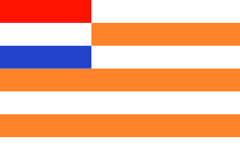Paradise for Saleby Carl N. McDaniel and John M. Gowdy, University of California Press, 2000."The number of people who can live sustainably on the planet is an open question. The rate of growth of the population accelerated for a long time. For example, it took about 180 years to double from half a billion (1650) to one billion (1830), while to go from two billion (1930) to four billion (1975) took only 45 years. Although the future is uncertain, the growth rate is no longer accelerating; that is, the time it takes for the human population to double is lengthening. If the trend continues, the population will eventually stop growing. While this is good news in the long term, over 80 million additional humans are still being added to the population each year, and similar increases are projected for many years.Although most people accept that there is a limit to the number of people the earth can support, that limit cannot be precisely determined. Why? Because the variables are so many and, to make matters worse, because unknown variables always lurk in the background. When Antoni van Leeuwenhoek predicted in 1679 that maximum human population was about 13 billion, he did not know that human activities were causing a mass biodiversity extinction, that cutting down tropical forests could change local and global climates, or that tractors would allow one person to till hundreds of acres. Despite these many variables, scientists and others have made numerous predictions; 65 factually based calculations have a low median of 8 billion people and a high median of 16 billion, with a mean of about 12 billion. These values are of immediate concern because many demographers have calculated that the population will plateau around 12 billion sometime in the second half of the twenty-first century.However, none of these calculations takes sustainability into account; that is, the calculations are essentially for a population size at a certain time, not for one that could be maintained for thousands of years. If we cannot do the calculation precisely for a point in time, we have no hope of performing a dynamic calculation that would be valid for hundreds or thousands of years. Both types of calculations are worthwhile, however, because the results give us a sense of reality -- the threshold of monumental disaster. The maximum population size numbers tell us that as the world population reaches 6 billion we are approaching disaster, because this population size is most likely not sustainable for very many generations.The number of organisms in an ecosystem is the result of interaction between the species' biological growth potential and the environmental resistance that prevents all organisms from realizing their potential. Under ideal conditions, for instance, one bacterium could increase to 2.2 x 10 to the 43 bacteria in 48 hours with a mass roughly a thousand times that of the earth. Environmental resistance-climate, abiotic resources like water and nutrients, toxic waste buildup, and biological factors like parasites, predators, and competition for resources -- prevent every population of organisms from realizing its growth potential.An animal species may have several long-term stable population sizes, each depending on unique environmental resistance factors. And each of these stable populations, or carrying capacities, represents the number of individuals of a species that the ecosystem can support under the specified conditions. If the environmental resistance factors do not change, the ecosystem does not change and the population size remains stable. Things never stay the same, of course. Over time major factors in the environmental resistance will vary and the population size will change.The carrying capacity concept has predictive value in managing wildlife and in determining the sizes of populations in natural ecosystems. You might ask, if carrying capacity applies to pheasants, deer, and grizzly bears, why doesn't it apply to humans? It does. Like all organisms, humans are subject to the laws of ecology, but we can't calculate the carrying capacity for humans with any precision because we can manipulate our ecosystems in profound ways. We have become extremely adept at tapping stored-up natural resources, especially energy, water, and soil fertility; and in doing so we establish what appears to be a higher carrying capacity. With the domestication of animals and plants and the emergence of agriculture 10,000 years ago, stored-up resources were used first within local ecosystems. Over the last two centuries, however, the earth's resource stockpiles have been used globally. This worldwide exchange of resources, as well as exceedingly clever technologies, have increased a region's carrying capacity by overcoming local constraints.Life on earth is possible because energy flows from the sun; despite exceptions, essentially all the energy that runs the earth's biotic enterprise is captured in photosynthesis by plants, algae, and cyanobacteria. We have been able to increase our numbers by coopting about 40 percent of the net land photosynthesis and a smaller fraction from aquatic environments -- 10,000 years ago the estimated world population of four million humans used less than 0.005 percent of net land photosynthesis. Consider again, for example, the great plains of North America where, prior to European habitation, 40 million bison and thousands of humans and smaller animals lived off the energy supplied by the grasses and other plants. We now farm and ranch that land, and in doing so we probably support an even larger biomass of animals -- primarily chickens, pigs, and cows, as well as millions of humans -- by employing industrial agriculture.It may sound good that we have improved the ecosystem's productivity by relying on industrial agriculture. Closer analysis, though, indicates that this may be a short-term phenomenon. When microorganisms, invertebrates, grasses, bison, deer, antelope, and native Americans were the prime players in the ecosystem, the whole system ran on sunshine and was biologically stabler. The ecological "books" were in balance, and some items like topsoil usually were improving. Industrial agriculture has increased the apparent carrying capacity by using vast amounts of fossil fuels to make fertilizers, insecticides, and herbicides, in addition to the fuels used to raise seeds and to run the machinery that works the soil and disperses seeds and chemicals. For each calorie of food produced, close to three calories of fossil fuel energy are consumed on the farm -- energy that did not come from this year's sunshine. In addition, water is pumped from the ground for irrigation; some of this water comes from aquifers that are drained faster than they are filled. These farming methods have led to a massive loss of topsoil through water, wind, and splash erosion. Over the past 150 years Iowa has lost 50 percent of its fertile topsoil to erosion, while the current rate of loss is 30 tons per hectare per year compared to a formation rate of 1 ton per hectare per year. In contrast, undisturbed grasslands and forests have erosion rates of .02 and .07 tons per hectare per year, respectively. In the long run this kind of agriculture reduces the carrying capacity of ecosystems, as it has done already in many areas around the world, primarily in ecosystems less resilient than parts of the Great Plains. The apparent success of current industrial agriculture has led people to believe that the earth's long-term human carrying capacity is far greater than it really is.Biologists also have indirect evidence that puts the size of our current population in an ecological category of its own. How many individuals exist in a population within a certain area depends on the organism's size. Bacteria are small and billions of many species exist in 1 square meter of forest soil. Field mice are much larger than bacteria and only thousands exist in 1 square kilometer of grass land. Deer are about the size of humans and 4 deer per square kilometer is a normal distribution in a forest-meadow habitat. Primates like howler monkeys and mountain gorillas are rare, and their density of habitation is a fraction of an individual for many square kilometers. A human is a large primate weighing about 50 kilograms, so we would predict human densities similar to those of primates or at least similar to those of other large animals like deer, wolves, or bears. When we compare the current human population with that of 50-kilogram or larger nondomesticated land vertebrates, however, the global human population density is now 100 times greater than that of any other similar-sized animal, past or present. Our global population size is an ecological aberration. The reason is simply explained: First, directly or indirectly, humans use huge amounts of the energy acquired by plants at the expense of other species; second, intelligence and communication have enabled huge human populations to exist almost everywhere on the planet by cleverly employing technologies to increase present-day carrying capacities.Not only is the human population enormous, but our local densities are gigantic, too. In cities like New York City or Hong Kong humans have densities of tens of thousands per square kilometer. In an entire country like Holland, an average of 440 people live in each square kilometer -- a phenomenal density when compared with other large animals. The current Dutch population could not maintain its lifestyle, or most likely any lifestyle, if it was limited to subsisting on resources from Holland alone. The Dutch would need at least fifteen times more area to obtain the resources they currently use. Such densities are possible in cities and most countries because people are taking resources from elsewhere.In 1798 Thomas Malthus, a British political economist, warned western industrial society that human population growth would be halted by natural processes unless we controlled our numbers. Humans have failed, however, to establish a stable population because beliefs and economic incentives support contrary behavior and because our technologies enable us to overcome local limits in the present. The export of Western culture and economies eliminated constraints on population growth in many places around the planet. The result? A world population that has doubled in just over forty years.Over the past hundred years, though, the patterns of change experienced by populations around the globe have exhibited enormous variability. In the early twentieth century, the populations in western European countries were growing rapidly, but by the early 1980s some had completed a demographic transition to zero population growth. Over a one-hundred year period birth rates had dropped to equal death rates because of availability of contraceptive technologies, widespread education, lower child mortality, higher living standards, and the depletion of places to export excess population.For most of the twentieth century nonindustrialized countries have witnessed tremendous jumps in their populations, but in the last several decades fertility rates in many have fallen even faster than were experienced during the demographic transition in European countries. This is not because living standards have risen; contraceptives, greater education and economic opportunities primarily for women, and media information on population and family planning have paved the way. Other situations, like economic and social deterioration in the former Soviet Union, have resulted in dramatic fertility declines. Although trends can be identified, the world is composed of myriad cultures, with each expressing a dynamic pattern of population change."While the foregoing makes it clear that calculating a precise human carrying capacity for earth will not be accomplished, it is absolutely certain that growth of the human population will stop. Simple mathematics tells us at recent annual increases of about 1.6% (a doubing time of 45 years) that in less than 1,000 years each person will have only one square meter of land and that in less than 2,000 years the human population will equal the mass of the earth -- both impossible. The tragic consequence of humans occuppying and using ever larger percentages of the earth's ecological space is that all of the rest of life -- except those weedy species that do well in human created habitats -- has no where to go except extinct. As a result, we humans are causing the sixth mass biological diversity extinction episode of the last 600 million years. Realizing biological diversity is what makes earth habitable and supportive of human civilization in the first place, this current extinction episode takes on overwhelming significance in human affairs.
FURTHER READINGJoel E. Cohen: HOW MANY PEOPLE CAN THE EARTH SUPPORT? New York: Norton. 1995. Joel E. Cohen: POPULATION GROWTH AND EARTH'S HUMAN CARRYING CAPACITY. 1995. Science 269:341-346.Clive Ponting: A GREEN HISTORY OF THE WORLD: THE ENVIRONMENT AND THE COLLAPSE OF GREAT CIVILIZATIONS. New York: Penguin Books. 1991.David Quammen: PLANET OF WEEDS. Harper's Magazine, October 1998, pp 57-69.Mathis Wackernagel and William Rees: OUR ECOLOGICAL FOOTPRINT: RELIEVING HUMAN IMPACT ON THE EARTH. Philadelphia: New Society Publishers. 1996.Peter Ward: THE END OF EVOLUTION. New York: Bantam Books. 1994.Edward O. Wilson: THE DIVERISTY OF LIFE. Cambridge, MA: Harvard University Press. 1992.Edward O. Wilson: THE DIVERSITY OF LIFE (Book Excerpt). Discover, September 1992, pp 45-68.
Wednesday, November 14, 2007
Subscribe to:
Post Comments (Atom)







No comments:
Post a Comment